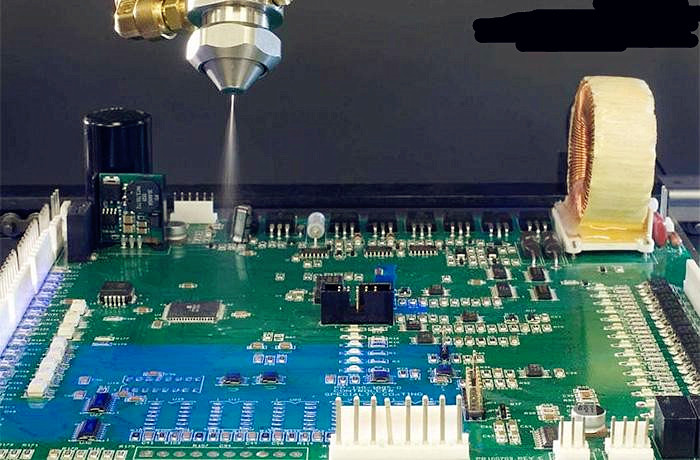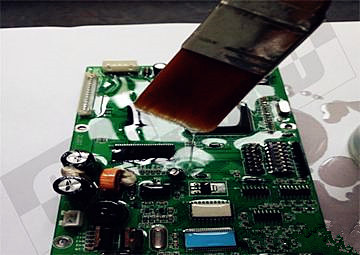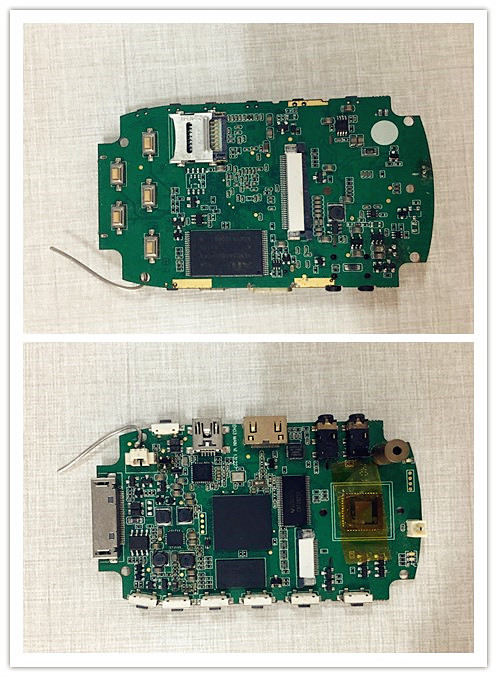Regarding the similarities and differences of the coating materials for land, sea and air equipment, plenty of literature can be searched online. In short, I believe that moisture resistance is the most basic performance requirement of various three-proof coating materials, and the equipment (including the airborne equipment of naval aviation) that is used on the sea, coast (offshore) and islands and reefs whose coating materials which more emphasis on the requirements of anti-salt spray performance; while the coating materials of the army (ground) equipment emphasizes the requirements of anti-mold performance; And coating materials of airborne equipment emphasizes the temperature resistance and changes.

The widely "three-proof" coating is used for the coating of structural parts and components of the equipment system and the complete machine. It is different from the protective coating used for printed circuit board components (PCBA): The former coating materials mainly uses resins, fillers, and pigments. Colored enamels composed of, additives and diluents; While the latter mainly uses transparent varnishes composed only of resins, additives, and diluents (including reactive diluents in UV-curable coatings). Obviously, the weather resistance of colored three-proof enamel paint is much better than that of three-proof varnish. Weather resistance-in addition to the "three-proof" (anti-mold, moisture-proof, salt spray) performance, another category of evaluation indicators for the performance evaluation of the coating layer, which includes: sand and dust impact resistance, rain, resistance to sun exposure (UV light decomposition), resistance to atmospheric aging, resistance to chemical solutions (agents) and atmospheric corrosion. As printed circuit board (PCBA) are usually used inside equipment (bins), their transparent three-proof coating does not have obvious requirements for the above-mentioned "weather resistance".

Generally, the three-proof painting discussed in Denso's exchanges is mainly transparent.
The commonly used liquid three-proof coating for PCBA mainly include epoxy, acrylate, silicone and polyurethane resins (including coating in which two resins are modified with each other, such as: silicone-modified polyurethane coating (still a polyurethane coating). Due to the high curing stress of epoxy coating, the application on high-density PCBs that use a large number of stress-sensitive components such as surface-mount multilayer ceramic capacitors, glass-encapsulated diodes, and ceramic-encapsulated chips is declining. For the remaining three three-proof paints, polyurethane is the best for their three-proof comprehensive performance, especially salt spray resistance.

Therefore, the PCBA three-proof coating for shipboard or coastal and island equipment is usually preferably polyurethane. However, if PCBA is high-speed signal transmission, or high-frequency, microwave circuit components, which have low dielectric constant requirements for the three-proof coating; Or need to work for a long time at a temperature above 85℃, low dielectric constant and dielectric loss, high temperature resistant silicone resin coating, even silicone elastomer coating. Silicone elastic coatings are also particularly suitable for airborne products with large temperature changes during the service (working) process. For example, after being exposed to sunlight on the runway, the temperature in the cabin may be as high as 50°C to 75°C; After a few minutes (or tens of minutes) after takeoff, the temperature in the cabin can be as low as tens of degrees below zero. Should consider the use of silicone three-proof coating.








